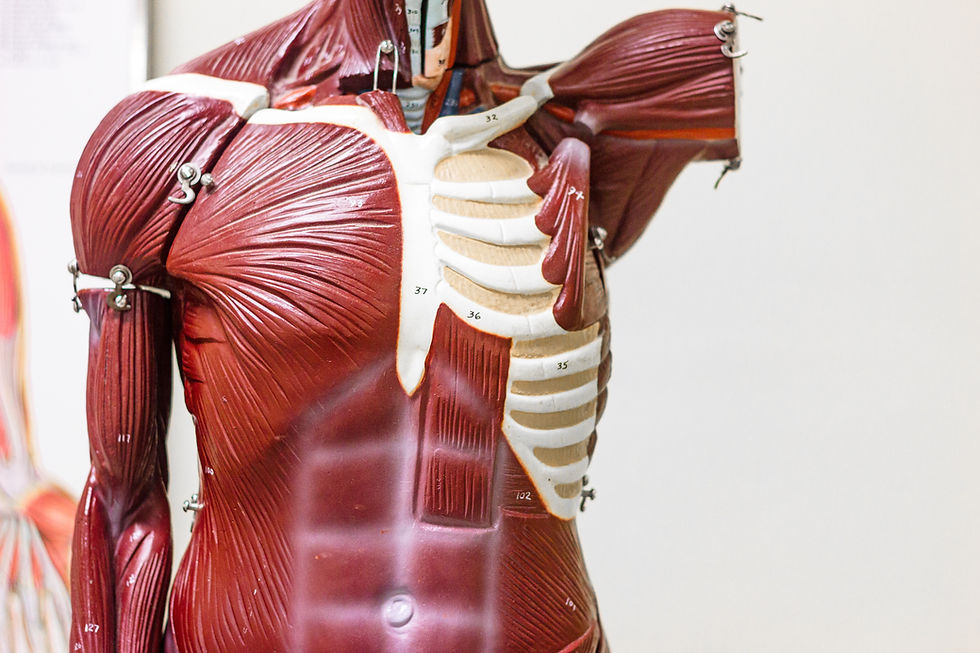Paresthesia or ‘Pins and Needles’ - the Tingling/Numbing Sensation in our Skin
- Ishta Gale
- May 6, 2024
- 3 min read
At the end of an assembly, all the students stand, lifting themselves off the wooden tiled floors, their feet feeling completely detached from their body, completely numb and senseless. An excruciating pain jolts through their bodies as they stand. However, after a few minutes of struggling to walk, the pain quickly dissipates before they realise it. Our feet which felt like heavy weights before quickly connect themselves back to our body circuits and we walk just like normal as if that pain had never even appeared. This is a harmless and common pain which the majority recognise as ‘Pins and Needles’ or scientifically ‘Paresthesia’.
Paresthesia commonly occurs in parts of our bodies such as the arms and the legs. This happens when you’ve been sleeping on one of your arms or having your legs crossed. For example, when you sleep on one side of your body, the arm underneath you is compressed by your weight. The tissues located around the nerve in your arm experience too much pressure causing a ‘pinched nerve’. This blocks the electrical impulses from your brain to the nerves in your arm. Also, it reduces your blood supply to this area, meaning less oxygen too. As a result, the area the pinched nerve supplies has paresthesia. This same process applies to our legs and other parts of our body too. Although, it may not just be due to the position of your body, and could also be a result of a long period of inactivity. This can easily be treated by moving into a different position allowing your nervous system to return to normal, increasing your activity which increases blood flow around your whole body or moving muscles in that area like wiggling your toes for feet and clenching and unclenching your fists for your hands.
However, if paresthesia consistently happens, it may be ‘Chronic Paresthesia’. It is estimated that up to 40% of people in the United States experience chronic paresthesia at some point in their lives. There is medication available to treat this: anti-inflammatory medicine like aspirin and non-steroidal anti-inflammatory drugs like ibuprofen to relieve the pain. In addition, therapeutic massages could be effective in improving blood circulation and nerve function.
It is also important to state that paresthesia is a common symptom of many underlying conditions such as diabetes. Overall, about half of all people with diabetes will develop diabetic neuropathy. It is caused by high levels of blood glucose, which causes chemical changes in nerves affecting its ability to transmit electrical signals. It can also damage blood vessels that transport oxygen and nutrients to nerves, which are important so nerves can function optimally. In a study of more than 1000 people with type 1 diabetes, 23.5% developed diabetic neuropathy at a mean follow-up of 7.3 years. Another cause is also a high concentration of triglycerides (fat) in the bloodstream. ‘Diabetic Polyneuropathy’ (a type of diabetic neuropathy) damages multiple peripheral sensory and motor nerves branching from the spinal cord to our arms and legs. It consists of paresthesia, weakness of muscles, loss of balance and coordination, insensitivity to pain and temperature changes and extreme sensitivity to touch.
As well as diabetic neuropathy, paresthesia is a common symptom of ‘Radiculopathy’. The spine is composed of multiple vertebrae (bones) supported by a network of muscles, tendons and ligaments. Each vertebra is protected from other vertebrae by an intervertebral disk making sure that they do not rub against each other. The discs can become damaged or inflamed which can compress/irritate a nerve root which causes pain. The most common causes of radiculopathy are degenerative disc disease and osteoarthritis (which causes joints to become painful and stiff). Usually, it is treatable without surgery with medication: oral corticosteroids, injectable steroids and gabapentin could all help. Simple exercises could too as one study found that patients who practised neck and chest exercises at least twice a week saw increased muscle strength, reduced pain, and prevented recurring injuries.
Therefore, that tingling and numbing sensation in our skin that we describe as pins and needles is a common, and usually harmless occurrence. However, if that recurring pain of paresthesia is experienced for a long period of time, medical attention should immediately be sought.


